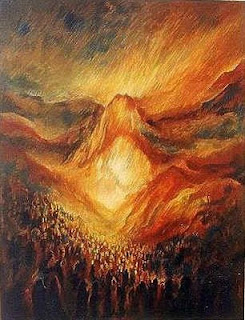Much of the disharmony in the Jewish community today can be attributed to the divergence of opinions concerning the revelation of the Torah at Mt. Sinai. Regardless of what individual members of the Jewish faith believes actually occurred at that mountain, the essential issue for the Jewish people on the eve of the Shavuot festival is that we feel a part of divine revelation.
How do we internalize the midrashic tradition that all Jews stood at Sinai as the Jewish Bible was revealed to Israel? Just as we Jews seek the spiritual connection to see ourselves as having escaped Egyptian slavery on Passover, we also attempt to envision ourselves at Sinai as the Torah was revealed several millennia ago.
Never has the spiritual force of revelation affected me more than it did on the early morning of May 31, 1998. I had recently graduated college and was spending the Shavuot holiday at a synagogue in Metro Detroit where I was serving as youth group adviser. The new assistant rabbi decided that the congregation would offer an all-night Tikkun Leil Shavuot (study session) for the first time, and then at dawn, we would participate in outdoor morning prayer services complete with a special reading of the Torah.
 |
| The Israelites standing at Mt. Sinai – Photo: Zipiyah |
It was a memorable night with many opportunities for Torah study with several wonderful teachers. With delicious snacks and caffeinated beverages, about 30 of us managed to stay up the entire night. At around 5 in the morning we convened outside in the courtyard so we could enjoy the sunrise while we prayed.
The Torah service that morning took on new meaning for me. The Torah was paraded around and I had the sense that we really were at Mt. Sinai claiming what God had lovingly gifted to us. I was called up for an honor, and as I stood at the Torah for my alliyah the sky began to get dark again. The Torah reader pronounced, “On the third day, as morning dawned, there was thunder, and lightning…” As the words “thunder” and “lightning” were uttered, a huge thunderstorm ensued. The Torah reader managed to get out a few more words, chanting “…and a dense cloud upon the mountain, and a very loud blast of the horn; and all the people who were in the camp trembled. Moses led the people out of the camp toward God, and they took their places at the foot of the mountain.”
At that point, the sky opened up and the heavy rains began. I grabbed the Torah and ran inside to the chapel where the scriptural reading was completed. As I wiped the raindrops from my glasses, I remember thinking that this must be what divine revelation felt like. This was the epitome of holiness. This existential experience was full of awe and majesty, thunderclaps and lightning bolts. Best of all, it was shared with community.
This was a liminal moment in my life. The experience has had a lasting effect on my life in the ensuing years. Being shaken by the thunder, seeing the lightning and hearing the words of our Torah convinced me that I really did stand at Mt. Sinai. We were all there together. As a community.
That was my revelation. That spiritually charged moment had the three ingredients that shape the lives of the Jewish people: God, Torah and Israel. I felt the awesome force of the Holy One, I was touched by the words of Torah, and I stood together with my fellow Jews.
What’s your personal story of revelation?



